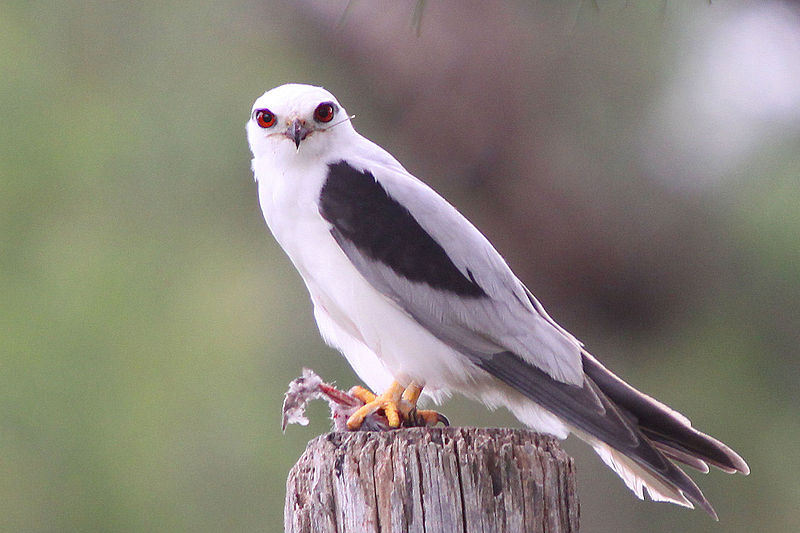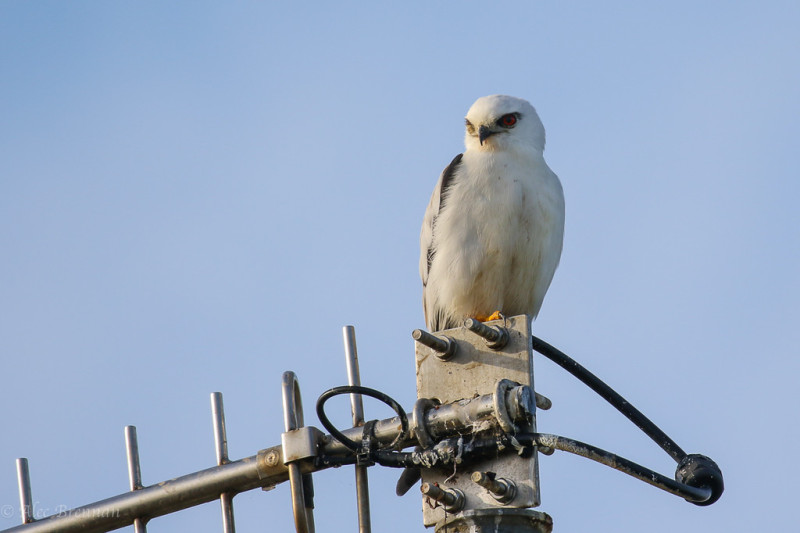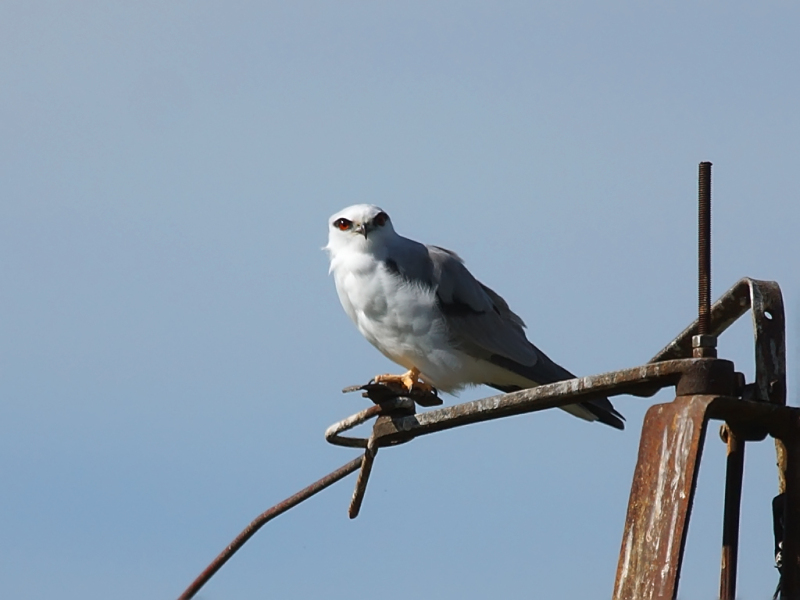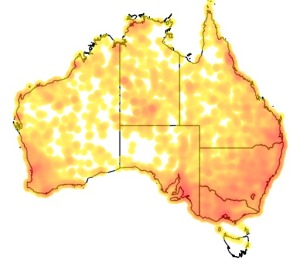Colours
Distinguishing features
Adults are a very pale grey with a white head and white underparts. The leading edge of the inner wing is black. When perched, this gives them their prominent black "shoulders". They have red eyes, with a black 'comma' that extends behind the eyes. They have a squared tail and a streamlined aerodynamic body. The bill is short with a sharp, hooked tip to the upper mandible. Their nostrils and the cere (skin at the base of the bill) are bright yellow and the bill is black. The legs and feet are also yellow, and the feet have three toes facing forwards and one toe facing backwards.
The sexes are similar, with females only just larger than males, although they can be up to 15% heavier.
The juveniles’ markings follow a similar pattern to adult birds, but they are washed with a rusty brown on the head and upper breast, and the back and wings are mottled buff or brown with prominent white tips. The young birds’ eyes are brown. (Wikipedia)
Size
- From 35 cm to 38 cm (Length of specimen) - applies to Females
- From 33 cm to 36 cm (Length of specimen) - applies to Males
Wingspan
- From 80 cm to 95 cm
Synonyms
Distribution
Distribution and habitat preferences
It is found in open habitat throughout Australia.
They are most common in the south-east and south-west corners of the mainland. Their preferred habitat is open grasslands with scattered trees and they are often seen hunting along roadsides. (Wikipedia)
Audio recordings
Chronotypes
Diet
They live almost exclusively on mice, and have become a specialist predator of house mice, often following outbreaks of mouse plagues in rural areas.
They take other suitably sized creatures when available, including grasshoppers, rats, small reptiles, birds, and even (very rarely) rabbits, but mice and other mouse-sized mammals account for over 90% of their diet.
They hunt by quartering grasslands for small creatures. This can be from a perch, but more often by hovering in mid-air. When hunting the kite hovers with its body hanging almost vertically, and its head into the wind.







